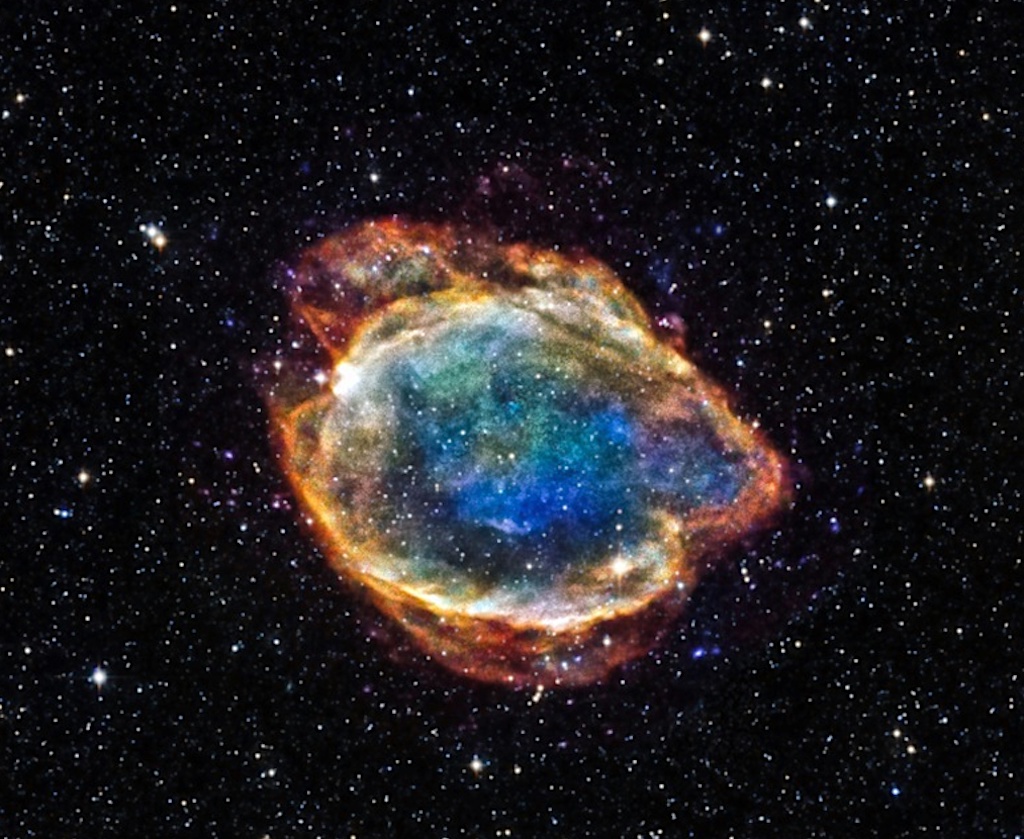
Astrophysicists have detected a supernova embedded in a wind rich with silicon, sulfur and argon. The observations suggest the massive star lost its outer hydrogen and helium layers long before exploding. This discovery offers direct evidence of the long-theorized inner shell structure of massive stars.
When massive stars explode, astrophysicists typically find strong signatures of light elements, such as hydrogen and helium. But the newly discovered supernova, dubbed SN2021yfj, displayed a startling different chemical signature.
Astronomers long have theorized that massive stars have a layered structure, similar to an onion. The outermost layers predominantly comprise the lightest elements. As the layers move inward, the elements become heavier and heavier until reaching the innermost iron core.
The observations of SN2021yfj suggest the massive star somehow lost its outer hydrogen, helium and carbon layers — exposing the inner silicon and sulfur-rich layers — before exploding.
This finding offers direct evidence of the long-theorized inner layered structure of stellar giants and provides an unprecedented glimpse inside a massive star’s deep interior — moments before its explosive death.
Weighing in at 10 to 100 times heavier than our Sun, such massive stars are powered by nuclear fusion. In that process, intense pressure and extreme heat in the stellar core cause lighter elements to fuse together, generating heavier elements. When the temperature and density increase in the core, burning begins in the outer layers.
As the star evolves over time, successively heavier elements are burned in the core, while lighter elements are burned in a series of shells surrounding the core. This process continues, eventually leading to a core of iron. When the iron core collapses, it triggers a supernova or forms a black hole.
Although massive stars typically shed layers before exploding, SN2021yfj ejected far more material than scientists had ever previously detected. Other observations of “stripped stars” have revealed layers of helium or carbon and oxygen — exposed after the outer hydrogen envelope was lost.
However, astrophysicists had never glimpsed anything deeper than that — hinting that something extremely violent and extraordinary must be at play.
The discovery was made using instruments located at the Zwicky Transient Facility (ZTF). Located just east of San Diego, ZTF uses a wide-field camera to scan the entire visible night sky. Since its launch, ZTF has become the world’s primary discovery engine for astronomical transients — fleeting phenomena like supernovae that flare up suddenly and then quickly fade.
It was through this investigation, the research team detected a star-forming region located 2.2 billion light-years from Earth.
To gain more information about the mysterious object, the team wanted to obtain its spectrum, which breaks down dispersed light into component colors. Each color represents a different element. So, by analyzing a supernova’s spectrum, scientists can uncover which elements are present in the explosion.
Through later analysis, instead of typical helium, carbon, nitrogen and oxygen — the scientists found in other stripped supernovae — the spectrum was dominated by strong signals of silicon, sulfur and argon. Nuclear fusion produces these heavier elements within a massive star’s deep interior during its final stages of life.
While the precise cause of this phenomenon remains an open question, the researchers think that rare and powerful process was at play. They are exploring multiple scenarios, including interactions with a potential companion star, a massive pre-supernova eruption or even unusually strong stellar winds.
The study appears in the journal Nature, titled “Extremely stripped supernova reveals a silicon and sulfur formation site.”













